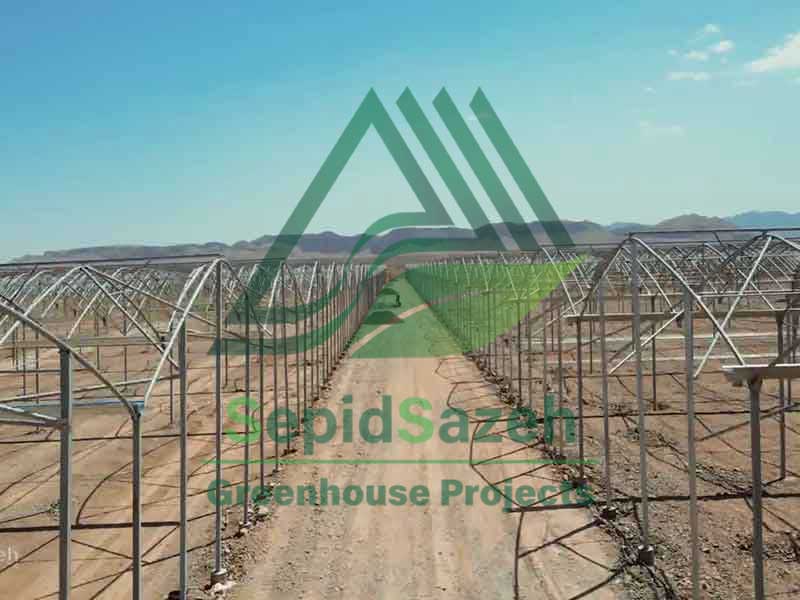Classification of greenhouses based on appearance (1)
Comparing different greenhouse designs and examining the advantages and disadvantages of each one gives the user the right view for the right choice, and this is the objective function that determines the type of greenhouse, and suggesting the optimal and suitable design requires investigation and understanding of the user. By examining all the effective factors in the greenhouse, tips can be suggested for better use of the greenhouse.
Common greenhouses can be divided into the following types based on appearance:
1- Gable roof (A Frame)
2- Domed roof (Gothic arch)
3- Curved roof
4- Sawtooth and killion
Gable roof (A Frame)
This type of greenhouses is mainly used for glass covers and that is for two reasons:
1- The intensity of light radiation is of great importance for food, which is true for the European continent, especially its northern countries.
2- The product under the cover should be used throughout the year (both flowers and plants and even restaurants).
The presence of an angle in the crown that makes it look like the word A is the reason for naming this model. This slope causes the appropriate direction of snow and rain outside the greenhouse towards the gutter and also directs the perspiration inside the greenhouse to the sides and on the other hand it causes the light rays to break inside the greenhouse to use the maximum light radiation.
Due to the heavyness of the glass and its small width, such structures have many connections and fittings, and for this reason, they are heavy and expensive. The maximum width used in these structures is 12 meters, which today are made in lower widths. The heat transfer coefficient in glass is high compared to other coatings, which is one of the disadvantages of such structures, so it is preferable to use these structures in greenhouses. The use of double-walled polycarbonate covers eliminates this shortcoming, but increases the initial cost.
Advantages
- High reliability (due to high resistance to wind and storms)
- Maximum light radiation
- Directing the perspiration of the greenhouse cover and the snow load down
- Convenient control of windows for natural ventilation
- Proper automation (guidance and control systems)
- Can be used in large areas
Disadvantages:
- Expensiveness of the greenhouse structure
- The lack of effective use for greenhouses with plastic cover: in such structures, tunnel greenhouses cannot be easily used with polyethylene cover because it is difficult to restrain the cover in the arches and the cover is not well restrained on the structure (pros and cons) wind direction
- Periodic glass washing
- Not using sunlight for natural soil sterility
Gothic arch
In this design, the crown of the greenhouse changes from an arch to a gabled greenhouse. Therefore, in this plan, we will have all the advantages of the tunnel greenhouse along with solving the mentioned problems. This forced design is used in tunnel greenhouses with high widths and is less used in interconnected greenhouses. Some greenhouse owners have reached a design close to dome greenhouses by placing a row of timber in the crown of the greenhouse to solve the problem of their tunnel greenhouses. This idea is also seen in the world's great builders. The advantages and disadvantages of these greenhouses are the same as tunnel greenhouses, with the difference that the problem of snow load and the direction of moisture from the inside to the sides has been solved. The advantage of the rooftop of the greenhouse allows for the installation of a roof window even with a glass cover.

